https://www.bbc.co.uk/
The BBC maps the challenges facing Nigeria, Africa's most-populous nation and largest economy, as it approaches a presidential election 20 years since the return of democracy:
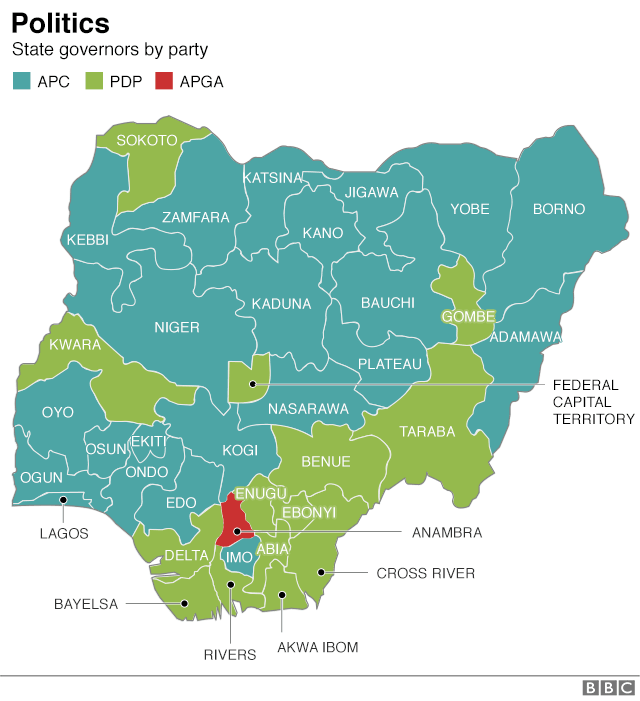

Four years ago, President Muhammadu Buhari's All Progressives Congress (APC) dominated the north and south-west of the country whereas the party's main rival, the People's Democratic Party (PDP), was more popular in the south and south-east.
However, unlike in the 2015 election, when a northerner, Mr Buhari, faced a southerner, incumbent President Goodluck Jonathan, this time the main challenger is the PDP's Atiku Abubakar, who is also from the north.
Analysts say the election is too difficult to call and the result is likely to be close.
The APC could suffer in the country's Middle Belt, Benue and Nasarawa states, as there is dissatisfaction with the failure to deal with communal violence there, the BBC's Abuja editor Aliyu Tanko says.
The APC is popular in the two states with the largest number of voters - Lagos and Kano - but there is the danger of voter apathy and a low turnout could become a problem.
- Muhammudu Buhari - the 'new broom' president
- Atiku Abubakar - the operator who knows how to make money
- Latest election news

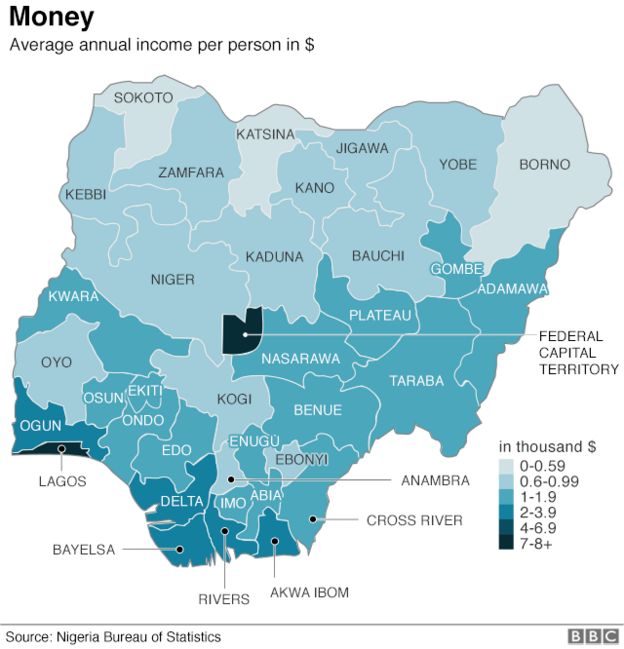

The income map reveals a clear regional divide in how wealthy Nigerians are, with the north being much poorer than the south of the country.
President Buhari's home state, Katsina in northern Nigeria, is the poorest area, where the average annual income per person is less than $400 (£309) - just over $1 a day.
Excluding the capital, Abuja, Lagos is the richest state and country's commercial hub with the average annual income per person at nearly $8,000.
The relative wealth of the southern states, Delta, Bayelsa, Rivers and Akwa Ibom is a result of the oil industry.
The figures represent the mean average income and are not a reflection on how equally that money is distributed across the population.



Every year many thousands of young Nigerians start looking for jobs but there are few opportunities for formal work.
Sustainable job creation was one of the challenges for Nigeria that accountancy firm PwC identified last year.
In general, despite some downturns, the economy has grown strongly since 2000, but unemployment remains stubbornly high. Nationally, it stands at just over 23%.
Ironically, some of the states, in the oil-rich south, with high average income also have high unemployment. As well as pointing to income inequalities, this suggests that the oil industry is not producing enough jobs for the population.

Average oil price
Opec crude oil price 1960 - 2018

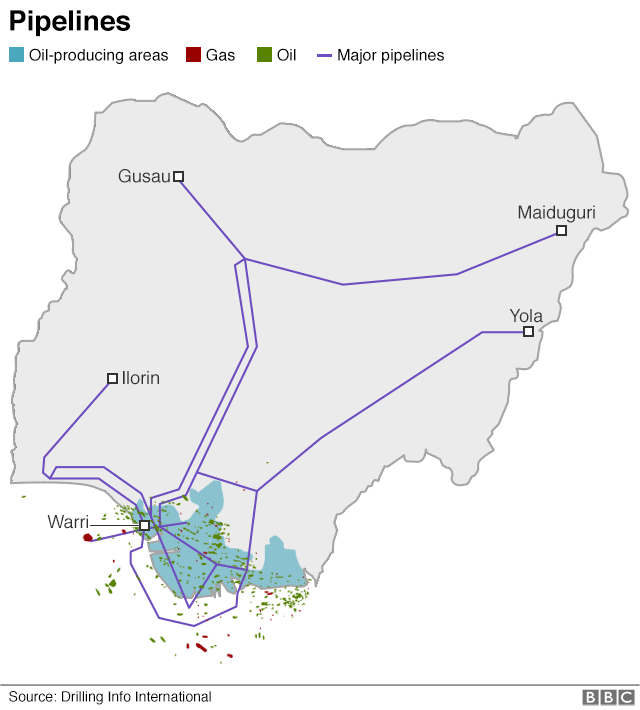

The oil and gas industry accounts for 9% of Nigeria's GDP, but the money the country gets for oil and gas makes up nearly half of all government revenue.
The global oil price, therefore, plays a big role in determining whether the government can pay its bills.
The first half of President Buhari's term was hit by a falling oil price, which led to a sharp rise in government debt.

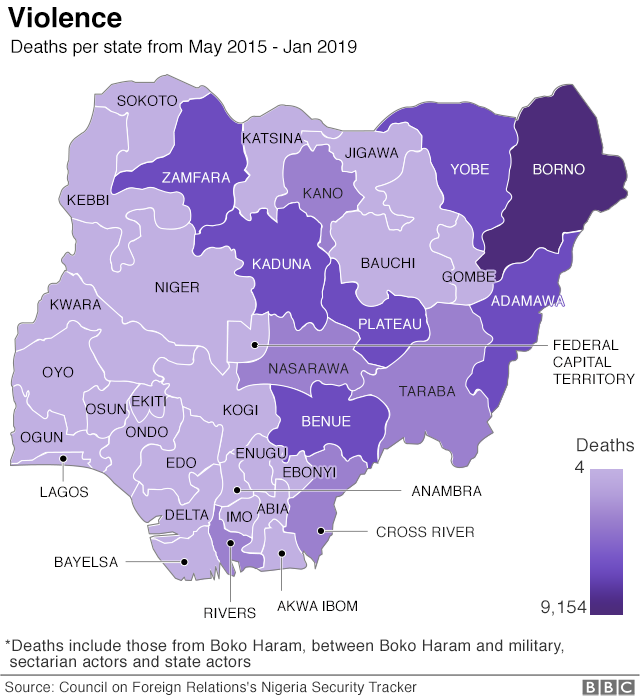

Security is a key election issue with inter-communal and Islamist-inspired violence accounting for nearly 10,000 deaths over the last four years.
Despite some military successes since 2015, especially in retaking territory from Islamist Boko Haram insurgents in the north-east, there has been a recent upsurge in attacks by the militants.
In the north-west, especially in Zamfara state, things appear to be worsening with armed bandits attacking villages and killing and abducting civilians for ransom, as well as stealing cattle.
The age-old conflict between settled farmers and nomadic herders has worsened in the last few years especially in central Nigeria. Mr Buhari's government has been criticised for its poor handling of the situation, but the conflict appears to have subsided ahead of the elections.
- Have Nigeria's militants been defeated?
- Midwife murders reveal brutal IS tactics
- How Nigeria's cattle war is fuelling religious tension
- Why is no-one talking about the Zamfara conflict?



Nigeria's 196 million population is divided among numerous ethno-linguistic groups.
The Hausa-Fulani people, based in the north are mostly Muslims.
The Yorubas of the south-west are split between Muslims and Christians and the Igbos of the south-east and neighbouring groups are mostly Christian or follow traditional religions.
Both main presidential candidates - Mr Buhari and Mr Abubakar - are Fulanis, with running mates from the south. President Buhari's deputy is Yemi Osinbajo, a Yoruba pastor and former law professor; Mr Abubakar has chosen Peter Obi, an Igbo politician.

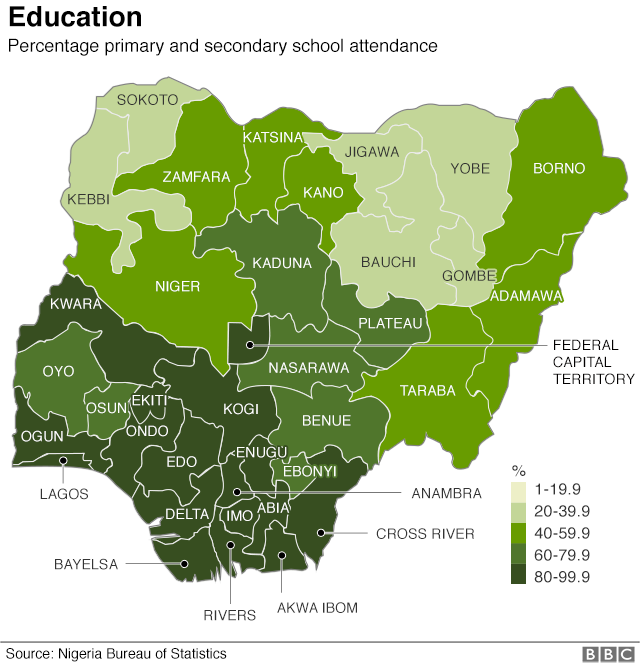

According to the UN children's agency (Unicef), one in every five of the world's out-of-school children is in Nigeria- though the percentage of school-age children actually in education varies widely across the country. There is a sharp regional divide, with the proportion of children going to school generally lower in the north.
It is estimated that 10.5 million children between five and 14 are out of school. Last October, a Unicef official said that 69% of those were in northern Nigeria, with the highest figure in Bauchi state, followed by Mr Buhari's home state of Katsina.
The government's National Economic Council recommended in October 2018 that a state of emergency be declared in the education sector to address, among other things, the number of out-of-school children.
Literacy rates are generally lower in the north, especially for women and girls.
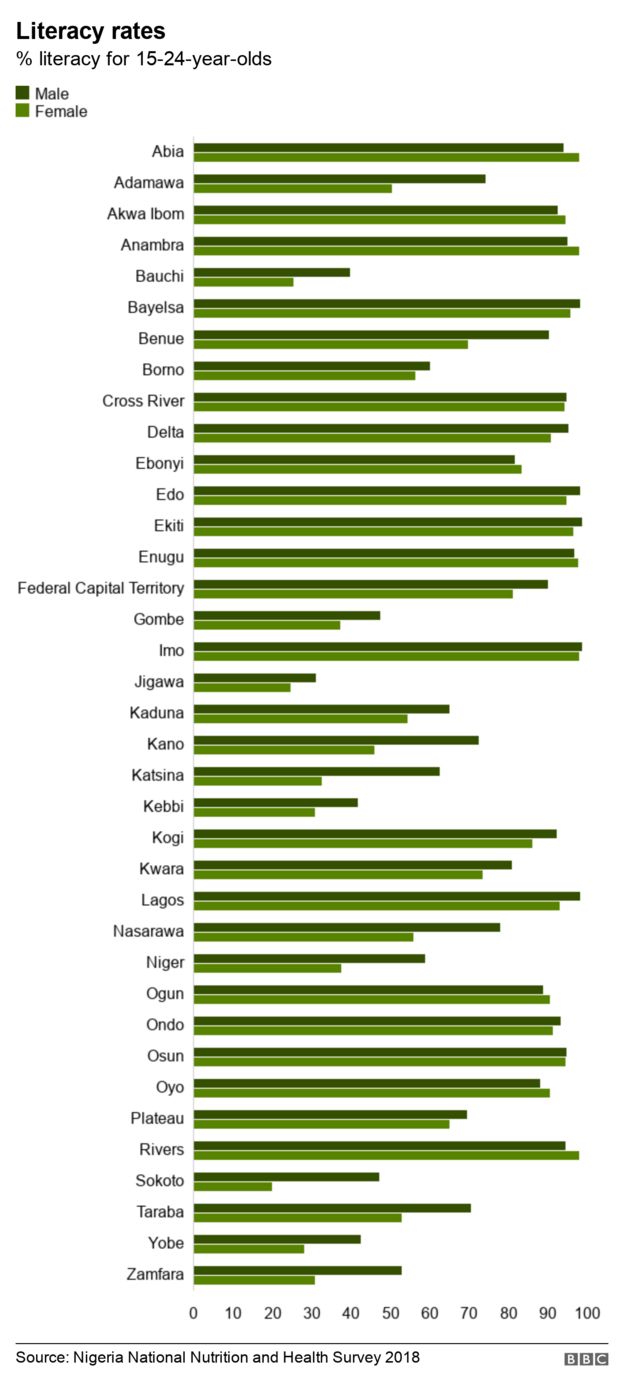

Research by Christopher Giles, BBC
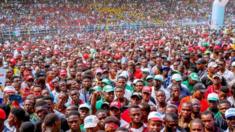
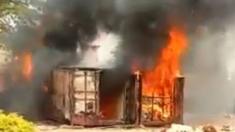

No comments:
Post a Comment